Blog Archives
Xbox 360 Slim Controller Design
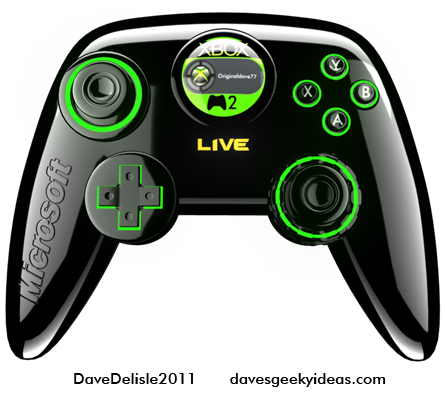
Several months back I designed a Xbox 360 Slim console prior to the unveiling of the new model at E3. For whatever reason, my design has gained a lot of interest, with lots of people coming here to check it out.
I finally decided to tackle a controller to compliment that console, and as you can see compared to my numerous controller designs, it’s very conventional, though I included a few unique features:
First off, I included a dial input that encircles the right analog stick. Of all the things I would like in a controller, this is it. This would be handy in many situations: toggling weapons, adjusting sniper scope zoom, fine-tuning game settings like volume, scrolling in a web browser, in-game puzzles (like opening a safe), and so much more.
Next up is an LCD screen where the ‘home’ button would be located. Thanks to the Sega Dreamcast, this is not a new idea, but I foresee something like this returning for next-gen consoles. This would display the User’s gamertag, achievements, controller number, and lots of other useful information. You could probably use this as an extension of games too - I really liked play-calling for NFL2K on the Dreamcast.
All those green LED bands are not just for show. They are designed to highlight controls for many scenarios. Say you are in a tutorial - usually the game would highlight the button with a flashing onscreen graphic, but here the controller could light up a button for you to press. Maybe you are low on ammo, a button highlight could start flashing to alert you. An unlocked ability could also be highlighted in this fashion. The game could also playback your inputs during replays. Or they could just simply indicate your presses during play.
Lastly, like the console I included an LED ‘LIVE’ logo, to indicate you are online. It may seem cheesy, but I like having something that amplifies the importance of the situation, similar to an ‘ON AIR’ light at a TV studio. It broadcasts that you are connected to a gaming network, and through your very fingertips no less.
What I didn’t show - the start/select buttons, and the shoulder/trigger inputs. Those would be included!
Argh that console looks so simple now. Gotta update that one day!
And Now For Something Completely Different
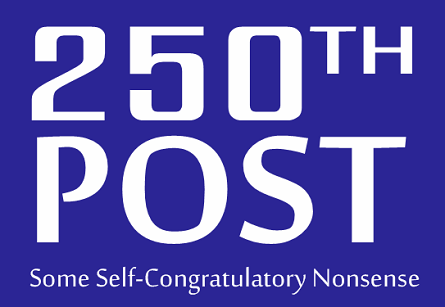
This blog started up waaaay back in March 2010. It has now reached the 250th post, a milestone held in high esteem across the interweb. Okay not really. But I was going to do a year-end thingy, may as well do it now!
Top 10 most-visited posts:
10. BP Oil Spill Ideas (Part 1). Happy to see this fiasco finally get resolved nearly five months after this idea went up (which I posted 1 month into the crisis).
9. Seven Ways To Fix The WNBA. Apparently a lot of you are seeking information on this fledgling league, way more than the big four leagues (which are frequently mentioned).
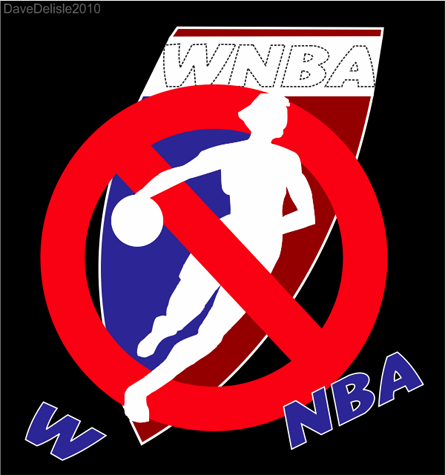
8. Geeky Gadget Wish List #6 Back to the Future Alarm Clock. I made 20+ GGWL entries, but this one took the cake. Many people want this gadget, and I hope Universal Studios and/or Thinkgeek is paying attention.
7. Calvin and Hobbes Papercraft Transmogrifier. Papercraft is a hit here, as you’ll see. Glad to see many people out there still missing Calvin and his stuffed tiger Hobbes as much as I do.
6. If IKEA Made Geeky Furniture Part 3: Mega Man. This one was a very recent post, and is still wildly popular, thanks in part to being singled out by many Capcom blogs/fan sites.
5. Jurassic Park Blu-Ray Collector’s Tin. Since this debuted a few months back, it has been one of my most popular entries. People want Jurassic Park on Blu-Ray (regardless of package), so I hope Universal Studios delivers these films in HD sooner than later.
4. Back to the Future Flux Capacitor Blu-Ray Case. BTTF again! This one continues to be popular, despite the trilogy already being released on Blu-Ray a few months back. Perhaps for the eventual double-dip, Universal could look at releasing something like this.
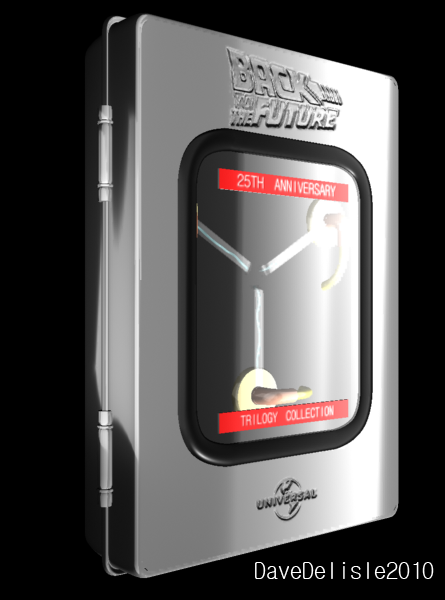
3. The Amoeba Train. I will admit, I think people sought this one out for the Skytrain map I included. I feel so used.
2. XBOX 360 Slim Design. I made this concept in anticipation of the refreshed 360 at E3. I have since gotten way more hits after the new 360 console was released, meaning there is a huge appetite for a slimmer model.
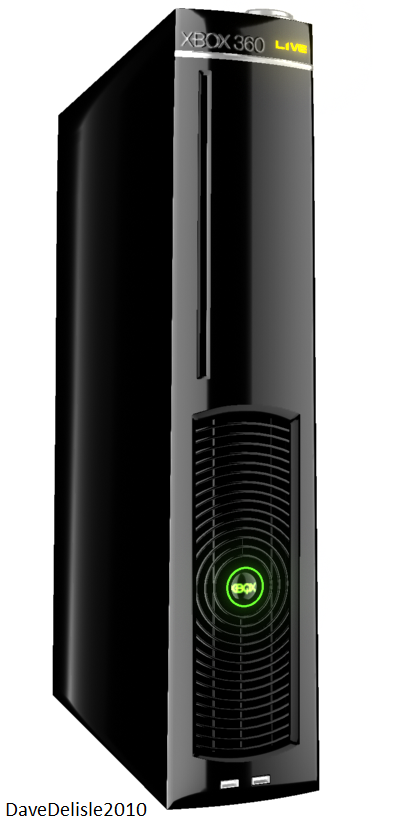
1. Ghostbusters Firehouse Papercraft. By an enormous landslide, this DIY bit of fandom continues to be popular since it’s debut on Oct 29, 2010. A spiffier version is in the works for the new year.
Thank you all for visiting! Tomorrow I will showcase my 10 personal favorite posts. It’s a wildly different list.
The Most Neglected Properties In Video Games
Video Games, like the film industry, is very reciprocal. The same properties come and go. Here is a look at some properties that, despite their popularity, aren’t getting video game love these days.
In no particular order:
Star Fox. Thanks to Nintendo’s recent efforts, Donkey Kong, Kirby, and even Kid Icarus can be crossed off this list. But poor Star Fox, still sitting in the Arwing cockpit in the hangar, waiting for take-off clearance. This flying omnivore hasn’t been seen since 2006′s Star Fox Command for the DS, and 2005′s Assault was his last outing on a console (Gamecube). A re-issue of Star Fox 64 is planned for the 3DS.
Panzer Dragoon. One of the most celebrated video game franchises of the 90′s and early 2000′s has been M.I.A. since 2002. Sega has some weird priorities, opting to shower the market with Monkey Balls (har har), and trying again and again to revitalize their mascot Sonic. I’ll give props to Sega for resurrecting NiGHTS a few years ago (a franchise close to making this list), but Dragoon needs to take flight again.
Perfect Dark/Timesplitters. These shooters were made by Rare or many former Rare devs at Free Radical respectively. Both shooter franchises have been away for over 5 years, which is a shame, as both have earned a lot of credibility with shooter fans.
Chrono Trigger. I’m not an RPG fan myself, but even I am shocked this series hasn’t seen a new iteration since 1999! Meanwhile Final Fantasy has churned one out every 2-4 years (5 total in that 11-year span).
Jet Set Radio. This one is sort of cruel because it seems the current generation of systems finally caught up to the gameplay Jet Set offers. With motion controls and touch screen inputs, the combination of rollerblading and graffiti would seem more intuitive. Another Sega franchise that is benched.
Gauntlet. A name that still holds a lot of weight, even for nostalgic purposes. Despite a few recent outings in 2001 and 2005, the series hasn’t been able to return to the popularity enjoyed during the coin-op Arcade years.
Dino Crisis. This companion franchise to Resident Evil hasn’t been heard from since 2003. I don’t think there are enough games where you can unload a clip of bullets into a Velociraptor. Zombies are hogging all the attention these days.
Army Men. Kidding. Seeing if you were paying attention. That is one series that somehow cranked out a plethora of games no one wanted.
Doom and Quake. I’ll lump these both together as they are literally joined at the hip. Amazingly, it’s been 5 years since Quake IV and 6 years since Doom 3, which is an eternity for a video game franchise. id Software is apparently hard at work on followups to both.
Wing Commander. I have never played this franchise (regrettably, I sat through the movie). This name is unmistakeably huge. You could create any type of space dog-fighting game, slap this name on it, and it would sell.
Road Rash. This is a series that is long overdue for a return. Clearly it has staying power. This franchise has been AWOL for 11 years, last appearing on the N64 in 1999.
Streets of Rage/Final Fight/Double Dragon/TMNT/Battletoads. These brawlers have only seen reissues and ports over the past decade. I suppose the recent HD treatment of Turtles in Time was the ultimate market litmus test for these games. We’ll be waiting a while if the sales from that game are any indication.
Crazy Taxi. It was everywhere in the early 2000′s, and it hasn’t been heard from since 2002 (later versions being ports). It’s a name and franchise that still carries some currency, though I don’t know for how much longer.
Star Wars Battlefront. There is no shortage of Star Wars games, I admit. But this Battlefield/SOCOM-ish franchise hasn’t hit the consoles since 2005, though it has visited the handhelds as recently as last year (Elite Squadron). This is a series that needs to be appreciated on the big screen, as well as Xbox Live or PSN multiplayer.
Killer Instinct. This highly-regarded fighting game hasn’t seen a release since Killer Instinct Gold in 1995 for SNES and 1996 for N64. If people still are asking for a sequel some 16 years after it hit the Arcade, you can tell this was a solid fighter.
Mega Man X. The original Mega Man continues to enjoy all-new 8-bit games, while the 16-bit era X hasn’t seen a new game since 2004.
SSX. A great sports game. I wouldn’t be surprised if EA was readying a followup for Kinect. This franchise was last seen in 2007. (Update: EA has announced a new SSX game)
Half Life 2 Episode 3. Currently neglected by Valve. *Ahem*. If you look at Half Life 2 being 6 years old, then one could surmise we are also long overdue for a Half Life 3.
Yoshi. Yup, the little dinosaur from the mushroom kingdom. This character has some of the most renowned platformers in history in Yoshi’s Island and Yoshi’s Story. Nintendo should give Mario some rest (with 3 major releases on the Wii in as many years) and give Yoshi another solo outing.
Space Channel 5/PaRappa the Rapper. These rhythm games could certainly enjoy some renewed life in Kinect, or even making guest appearances in other franchises (Rock Band, DJ Hero, Dance Dance Revolution). With so many crossovers occurring these days, the fans would eat it up.
Sly Cooper. I won’t list Crash Bandicoot here - he seemed popular by default. But Sly Cooper is another mascot-ish character that had a great trilogy of games, the last one being released in 2005. With Splinter Cell, Metal Gear, and even Batman (Arkham Asylum) being all sneaky and stealthy, there is no shortage of demand for this type of game.
Onimusha. It has been 4 years since a new Onimusha game bowed. This is probably the reality of modern-day game development. Capcom just can’t crank a new one out every 2 years.
Space Quest/King’s Quest. These PC point-and-click adventure games haven’t seen releases since 1995 and 1998 respectively. With the all-new Tales of Monkey Island and the special edition releases of Secret of Monkey Island 1 and 2, the Quest franchises should have been returned to active duty to capitalize on the nostalgia.
Contra. This franchise has seen releases in Japan and on handhelds over the past few years, but no major console iterations in the west since Neo Contra in 2004. Still a hugely popular franchise, and often used as the benchmark to gauge difficulty in games.
Did I omit one or erred in a selection? Let me know.
Microsoft Reveals THEIR Transforming D-Pad For Xbox 360
You can find the link with video here.
I think it’s an interesting innovation. The D-pad telescopes to get some clearance from the surrounding encasement. The D-Pad certainly needed an improvement, so kudos to the Microsoft Engineers- who also weren’t given enough credit for remedying the original Big Bertha controller for the first Xbox. Here is a pic:
They also removed all the colors from the buttons, opting for a monotone approach. I think this is another brilliant move, as it makes the controller more adult, and less fisher-price. I think most gamers won’t even miss the colors.
I got all excited when I saw the Kotaku headline, because I thought they were going to do something like mine I designed a year or so ago:
I think this 360 control pad is the best in the business. It just needs a name, like the DualShock, Sixaxis, Wiimote…something cool. HaloPad? WarGear?
Video Game Publishers Created Their Own Monster: How They Should Fight It
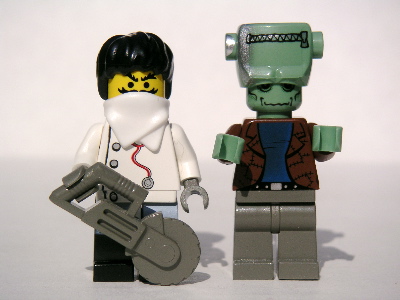
THQ and Electronic Arts have created initiatives to help combat the used re-sale of their games, as they aren’t too fond of GameStop and EB Games profiting on used games. Currently the two publishers are requiring secondhand users to purchase a license ($10) to enable used video games to play online.
I personally don’t think that will curb the sale of used games, and for a couple of reasons: the video game consumer is extremely savvy, and will factor that additional $10 on top of the already cheap game they are purchasing. Also, online play typically isn’t the main draw of a used game, because the online activity for that game has probably died down by the time it reached the ‘used’ bin. And finally, gamers will usually buy a used game that is top-rated and mostly offline content - these games have a more timeless quality and deliver a lot of bang for a few bucks.
The big irony here, is the Publishers are trying very hard to combat a situation they effortlessly created. They forged the used game market in two ways: by releasing yearly iterations of the same game (Sports, Shooters), and by flooding the market with too many games.
With the yearly titles, gamers clued-in that there would be a new version eventually, may as well get some return on the current title. I adopted this thinking with sports titles, and after a few months of playing NHL or Madden, it was time to trade it in. Sports games are essentially $60 rentals, and trading them in is every bit the ritual as buying them in the first place. In my experience, I wouldn’t get much trade value for sports games - retailers were often flooded with them, sometimes even refusing them outright.
As for flooding the market, with so many consoles, handhelds, and mobile games, it is nearly impossible for most gamers to shell out full price for everything they want (and they want so many - gamers are compulsive!), so they assign purchasing priorities for games. Some titles are must-have midnight-madness purchases like Halo or GTA. Other titles can be put on the back-burner while the current game queue is enjoyed. And some games will be scooped up if it’s a bargain, whether used or heavily-discounted, gamers cannot resist a good value (see: Steam Store).
And once in awhile, gamers will try to save a few bucks and trade in some games to continue their habitual gaming diet. It could be for financial reasons, or simply unloading a few games that are collecting dust. On the flip side, gamers will seek out used games for nostalgic reasons. If Nintendo managed to outlaw the sale of SNES carts somehow, I don’t know what I’d do!
So far, the EA and THQ online pass initiatives aren’t penalizing the person who plopped down $60 to buy the game, which is a good thing (unlike the accusatory DRM) . And $10 is a reasonable fee for countless hours of online play, so the person who bought it used has little to gripe about. However I think Publishers could try a few different ideas to make everyone happy:
- They could include a gift card to receive a discount on next year’s version of the franchise upon trade-in. If EA gave me a $10 discount on Madden 12 for trading in Madden 11, I’d happily make that trade.
- Some loyalty down-loadable/bonus content or achievements. DLC has been very effective at extending the life of a game, but not all games are DLC-friendly, so perhaps offer gamers extended demos or beta invites to other games just for being regularly active with a title for an extended period. You could also include some Trophies or Achievements that commemorate how long the gamer has been active with a title. There are many ways to recognize consumer loyalty.
- Publishers could offer a direct outlet for trading in their games for credit. They could send out envelopes to collect titles from gamers and then send a credit back. With Netflix (and many questionable Cash4Gold companies), people are conditioned to this kind of transaction. It is going the extra mile, but it cuts out the middle man (GameStop).
- Publishers could offer legacy games as trade bait. Many publishers have a library of games reaching back as far as three decades. A lot of these games are considered ‘Abondonware‘, because they aren’t in circulation, and are just plain dated. Publishers aren’t really making money on these older games. So if EA enticed me to swap in my NHL 10 for a disc of 12 classic games like Road Rash, Need For Speed II, James Pond, NBA Street, etc., then I’d be inclined to accept. Trading one used game for a bunch of older games works for me. EA doesn’t suffer lost $ on the resale, and they make the customer happy. It’s win-win.
- Go the upgrade option. Microsoft gives consumers the option to upgrade to the newest Windows OS at a discounted price. When a new version of the game comes out, I’d like to have the option to download it to my console, using the previous year’s disc as the enabler of the new game. And I want a discount. This route will also help ween people onto the impending digital-only future the game industry is heading towards (then used games will no longer be an issue). An excellent incentive to hold onto that disc.
- Give those game discs extra functionality. Remember when Metal Gear Solid read your game saves from other games? Well game discs should trigger content in other games. For example I am in the middle of playing Tiger Woods Golf 11, and I want to unlock some additional content. I swap in a Mass Effect 2 disc, and Commander Shepard is now inexplicably teeing it up in his spacesuit as a bonus character. Yes that example is silly cross-pollination, but there are so many ways you could proceed with this mechanic. If I have no idea what potential content my game disc will unlock in other game releases (current or future), I may be more inclined to hold onto it. I’d kick myself if I traded away the ultimate unlockable or upgrade.
That’s all I can think of for now. What’s your take?
Xbox 360 Slim Redux
Sorry for the lack of activity as of late! Been conjuring up designs for work. Without further ado, here are some new renders of a previous post, my then-prediction of the Xbox 360 Slim.

Plus a lot of you have been google-searching for an Xbox 360 Slim these past few weeks. Clearly there is an appetite for a smaller, leaner Xbox 360. Why are people obsessed with thinner?
I still like my design because it actually is reflective of the box namesake, as opposed to the angular redesign Microsoft issued for the recent 360 makeover. I will give them credit for offering their newest system in both glossy and matte finish versions, so consider this re-post my “glossy” version.
I will soon be unveiling some new Blu-Ray sets and some more Video Game systems. Stay tuned!
Editorial: Why The Microsoft Kinect Will Fail
I recently had the opportunity to play with the Kinect device. It is an impressive piece of technology. What it can do with a single camera as far as motion capture is an achievement. Unfortunately it translates into a very short list of gaming possibilities.
If you think about it, how much can a person do in front of a camera while facing a TV set? Not a whole lot.
Kinect in a nutshell: you have a trapezoid-shaped playing area you are restricted to. There is room for two people to stand side-by-side. You have to stay in the field of view to play games.You can jump, pose, and move around within your playing area, but that is it.
So the game types you are reduced to:
- Exercise games. Your basic stretching or aerobics or Tae-Bo thingy. I’d include very basic fighting games here too.
-Dancing games. Shake your booty.
-Mime games. Simple posing in front of the camera.
-Singing games. The Kinect has a microphone built-in.
-Sword-swinging and fencing games that don’t require a lot of movement.
-Anything on rails. Lets face it, you can’t run into your TV. You also can’t turn - that would nullify your ability to keep an eye on the TV.
-Racing games that rely on tilting your body to steer. I’m not convinced how they can incorporate breaking and accelerating effectively.
You can forget about any shooter games, again not being able to run around or turn in place, not to mention shoot a gun effectively.The Kinect knows when you are pointing your hand at the screen…but firing? Maybe if you made pew pew sounds.
No platform games. It’s hard to move your character in any direction freely. Kinect can detect jumps. Basically any platform game would have to be ‘on rails’. Think of Donkey Kong Country’s ‘mine cart’ gameplay. The cart moves forward automatically - you input the jumping.
Sports games? Maybe golf or bowling, as you are mostly stationary there. Hockey? Football? Basketball? Soccer? Nope. Unless you like playing sports ‘drills’, where you are stationary and tossing the ball around.
Rhythm Music Games are also limited. The Kinect can see you playing Air Guitar, but nothing as detailed as using specific keys, similar to what would be needed to play Guitar Hero. So strumming, foot tapping, and drumming gestures, and that’s about it. The Kinect does have a mic, so expect karaoke games to outnumber ‘instrument’ games.
Skateboard games? The Kinect 2009 E3 demo showed a kid scanning his skateboard prior to playing - not sure if this just created an in-game prop, or if the kid actually used the his board to play too. The game can see you in different stances and grabs, maybe an Ollie jump as well. I wouldn’t recommend playing like this! You could probably tilt your body to turn, but expect exploring an open-world skate park to be problematic, again with the not turning or moving freely.
For that matter, forget open-world games like Grand Theft Auto.
RPGs are a big no. Not only is running and turning ruled out (see a theme?), but frequent menu navigation will be a headache. You have to point a cursor (with your hand) around like the Wii, but you need to hold your cursor over a button for a few moments to trigger a button-press. It’s a huge flaw in my opinion. You’ll soon find getting through the menu of a Kinect game to be a time-consuming ordeal.
Puzzle games might work if the game was slow in pace, and not too prone to misreading gestures.
So there you have it. The Kinect will fail because of it’s limitations. It’s not nearly as limited as the Wii Balance Board, but it will become evident that Kinect will be home to many exercise games, or games that are very shallow in gameplay depth. I predict some games will eventually start using a controller to help out as well.
Don’t get me wrong, the Kinect is a very decent first step technologically-speaking, but as a gameplay tool, very limited. I originally envisioned many possibilities for this platform, but now all I can see is the ceiling.
The New Xbox 360 Slim Revealed?
Well, it’s an improvement - if this is indeed the newest hardware. It has yet to be officially confirmed. Read the full story here at Kotaku. It looks to still have the disc tray, which are junky and awkward and outdated, in my opinion. I do like the side vent grills, very sports-car like. The angular shape looks odd, though this is on purpose - Microsoft wants you to take notice, and mess with your pattern recognition center of the brain as you do a double-take. Dynamic lines always make people take notice.
Still, I am biased towards my own recent design:
Either way, I’m sure Microsoft has developed a much more reliable machine, to avoid a repeat of the RROD fiasco that plagued the platform for all its 5 years. With x number years at the drawing board for the new 360, it must be perfection now, right?
XBOX 360 Slim Design
UPDATE: I have updated the artwork, with some alterations and a new glossy finish here.
UPDATE #2: I designed a matching controller here.
With E3 2010 around the corner, I’m hoping there is a few more hardware unveils to be had besides the much-hyped Nintendo 3DS. I decided to take matters into my own hands and design a 360 Slim console, to replace the 5-year old 360 design.
The XBOX 360, while a very powerful and capable machine (when it’s not suffering RROD), has always been ugly to me. It looks like an appliance, and even the power button feels like it’s been borrowed from a stove top. I think it’s “Alien Spacecraft” look is dated and doesn’t look great parked next to an LCD screen.
XBOX 360 Slim
Here is my take on what a 360 Slim or redesign should look like. Firstly, I got rid of the disc tray in favor of a loading slot, like the Wii and PS3. Secondly, the memory card slots are parked on top next to the hard drive.
As for the overall look of this 360 Slim, It was highly influenced by 360 art and packaging, oddly enough. There is a huge air intake in the front (this thing needs to breathe, am I right?), made up of two sets of encircling ring patterns. The top of the console looks like the banner of a 360 game package, which would look great over a face plate.
I designed the layout to truly showcase a face plate. It would sit under the LED band, and now you can actually see some nice art framed, say the box art from HALO 3. The face plate would be smaller, allowing publishers to include it inside the game box, methinks.
There are a few more LED lights, one large band to indicate power, and the XBOX ‘LIVE’ word to show you are connected. It’s cosmetic, but I think it looks cool.
